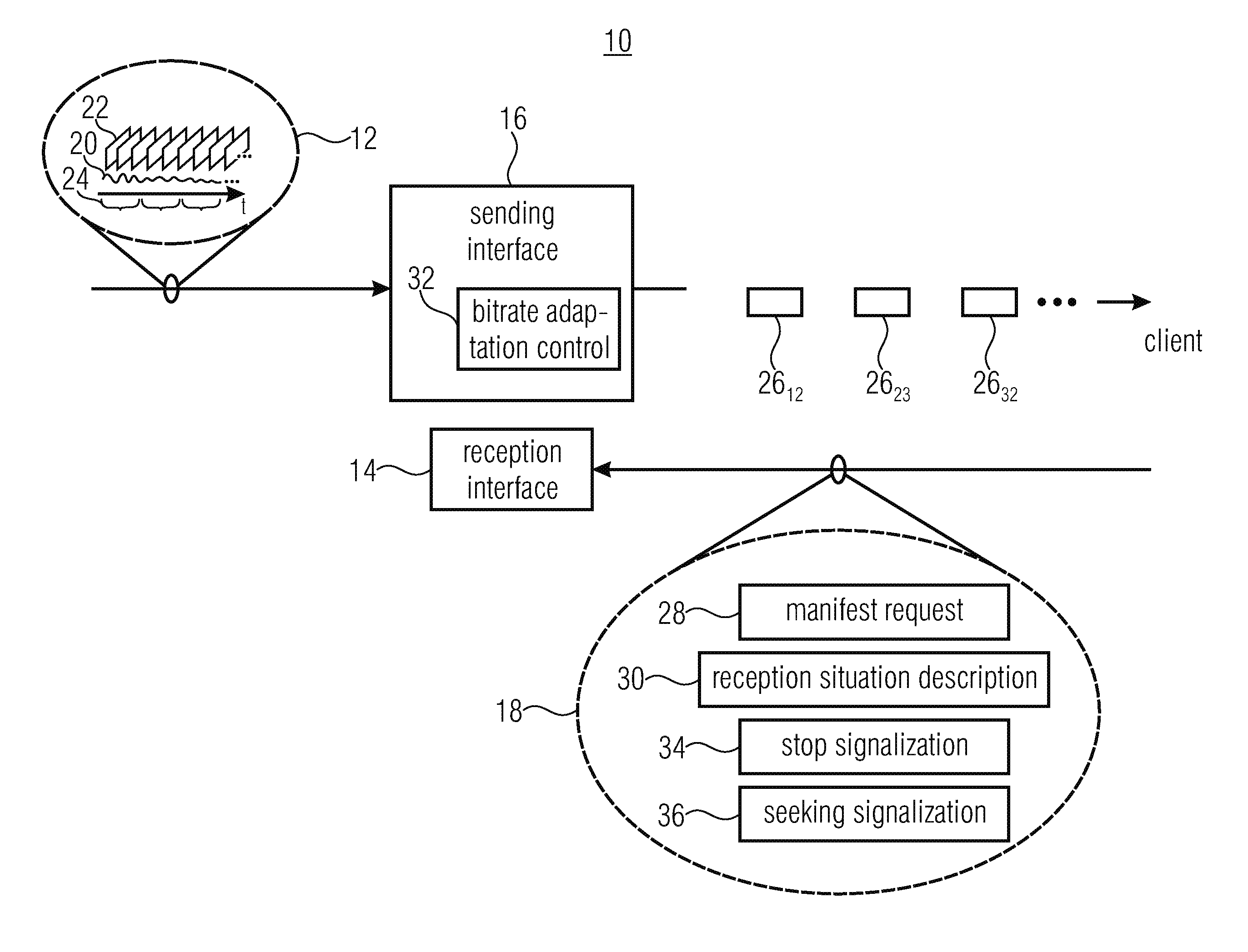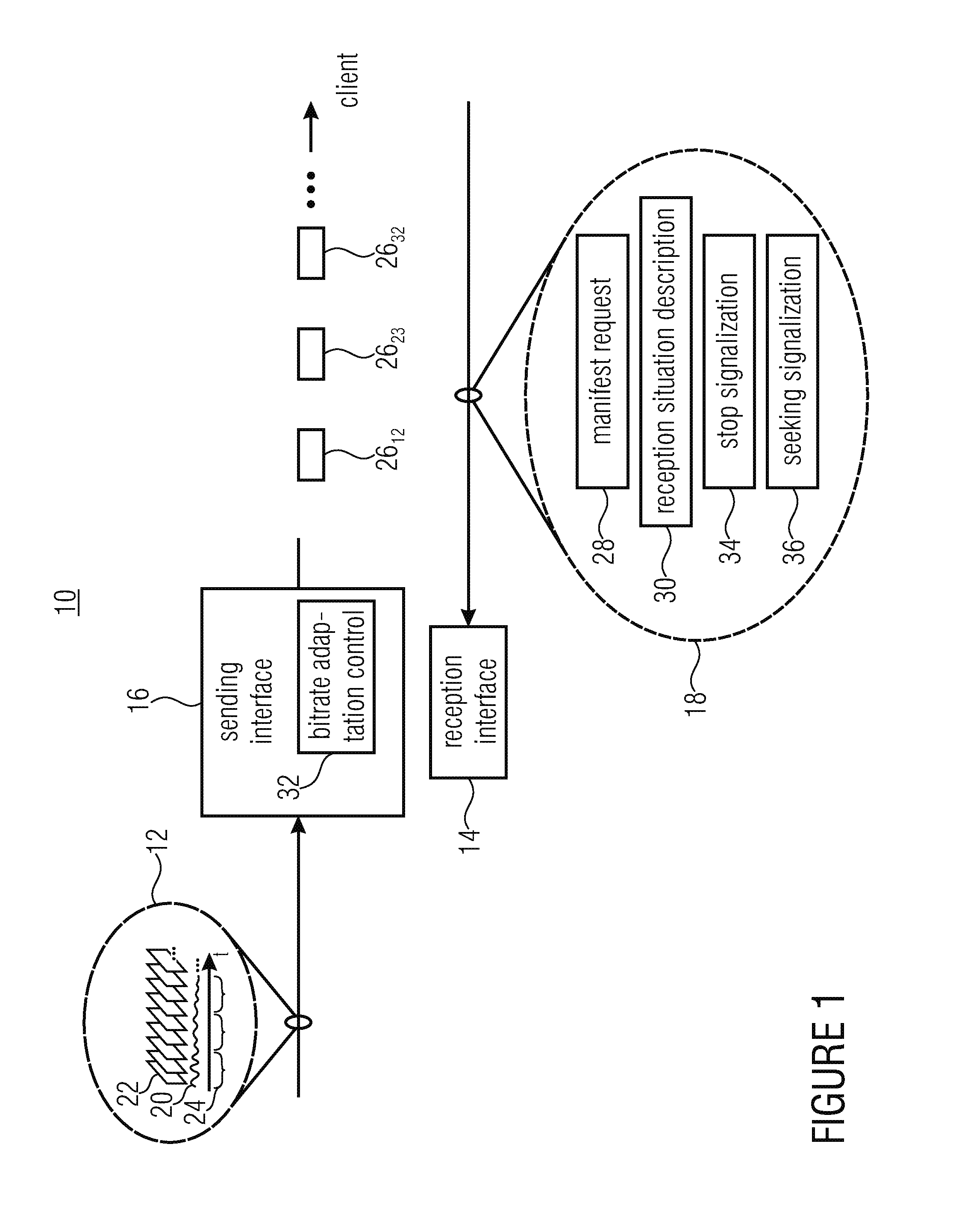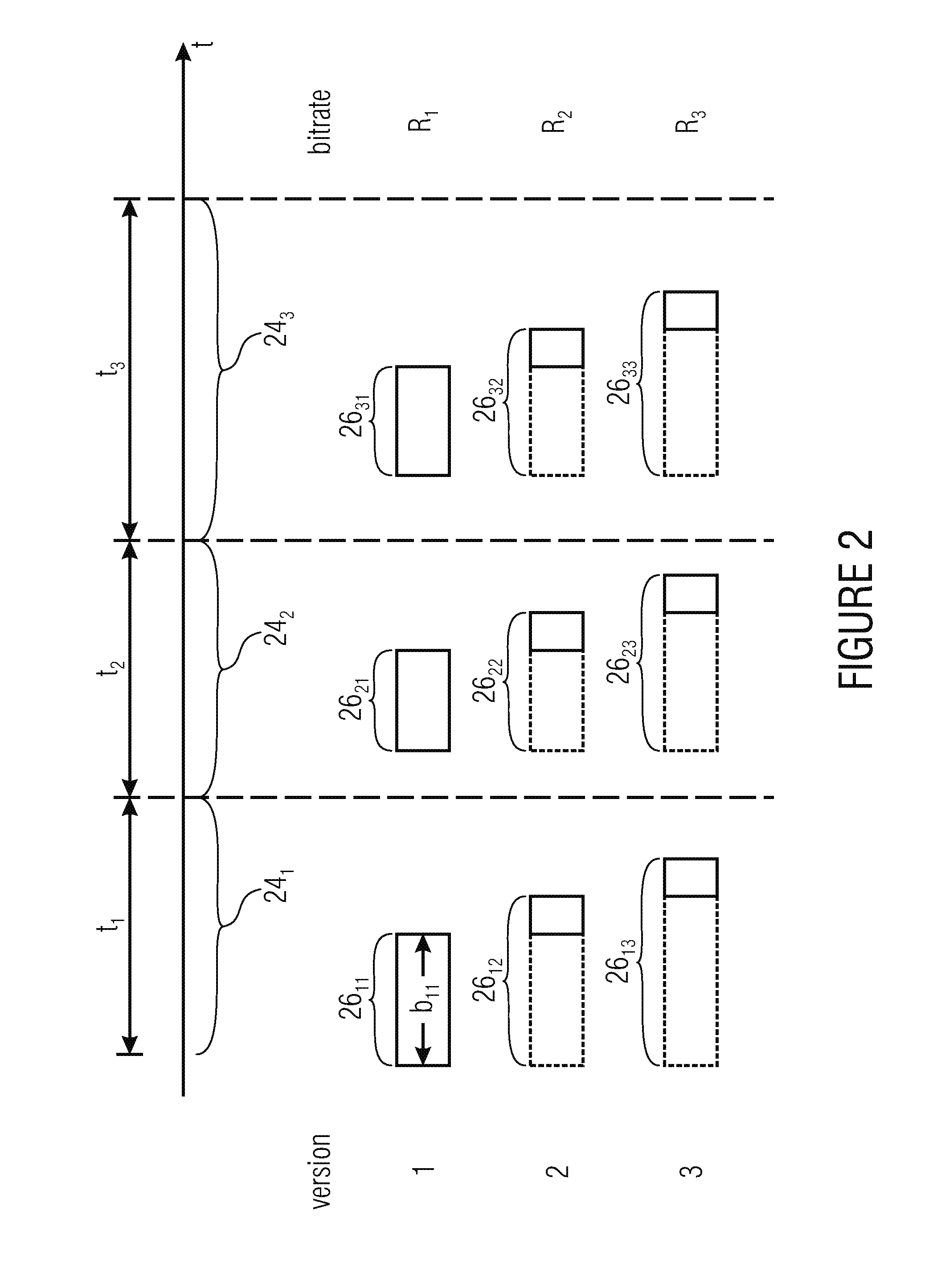Media streaming
a technology of media streaming and media, applied in the direction of transmission, electrical equipment, etc., can solve the problems of reducing the bandwidth of downlink transmission to several clients, reducing the efficiency of upstream bandwidth consumption, and putting strain on the transmission network in terms of uplink transmission bandwidth consumption, etc., to achieve the effect of reducing the upstream bandwidth consumption, and reducing the latency of streaming
- Summary
- Abstract
- Description
- Claims
- Application Information
AI Technical Summary
Benefits of technology
Problems solved by technology
Method used
Image
Examples
Embodiment Construction
[0019]FIG. 1 shows a device 10 for streaming a media content 12 to a client, which is not shown in FIG. 1. Device 10 comprises a reception interface 14 and a sending interface 16. The reception interface 14 is configured to receive one or more queries 18 from the client, with the same concerning the media content 12. Queries 18 of different types may exist and the meaning thereof is discussed further below.
[0020]The sending interface 16 is configured to push the media content 12 to the client using a server-push technology of a network protocol at varying bitrate. Later on, it is described that this network protocol may be HTTP / 2.0, although other network protocols having a server-push capability may be used as well.
[0021]FIG. 1 illustrates that the media content 12 may, for instance, be a temporal sampling of an audio and / or video scene such as an audio signal 20 composed of a sequence of audio samples, or a video 22 composed of a sequence of images with FIG. 1 illustrating the tem...
PUM
 Login to View More
Login to View More Abstract
Description
Claims
Application Information
 Login to View More
Login to View More - R&D
- Intellectual Property
- Life Sciences
- Materials
- Tech Scout
- Unparalleled Data Quality
- Higher Quality Content
- 60% Fewer Hallucinations
Browse by: Latest US Patents, China's latest patents, Technical Efficacy Thesaurus, Application Domain, Technology Topic, Popular Technical Reports.
© 2025 PatSnap. All rights reserved.Legal|Privacy policy|Modern Slavery Act Transparency Statement|Sitemap|About US| Contact US: help@patsnap.com



